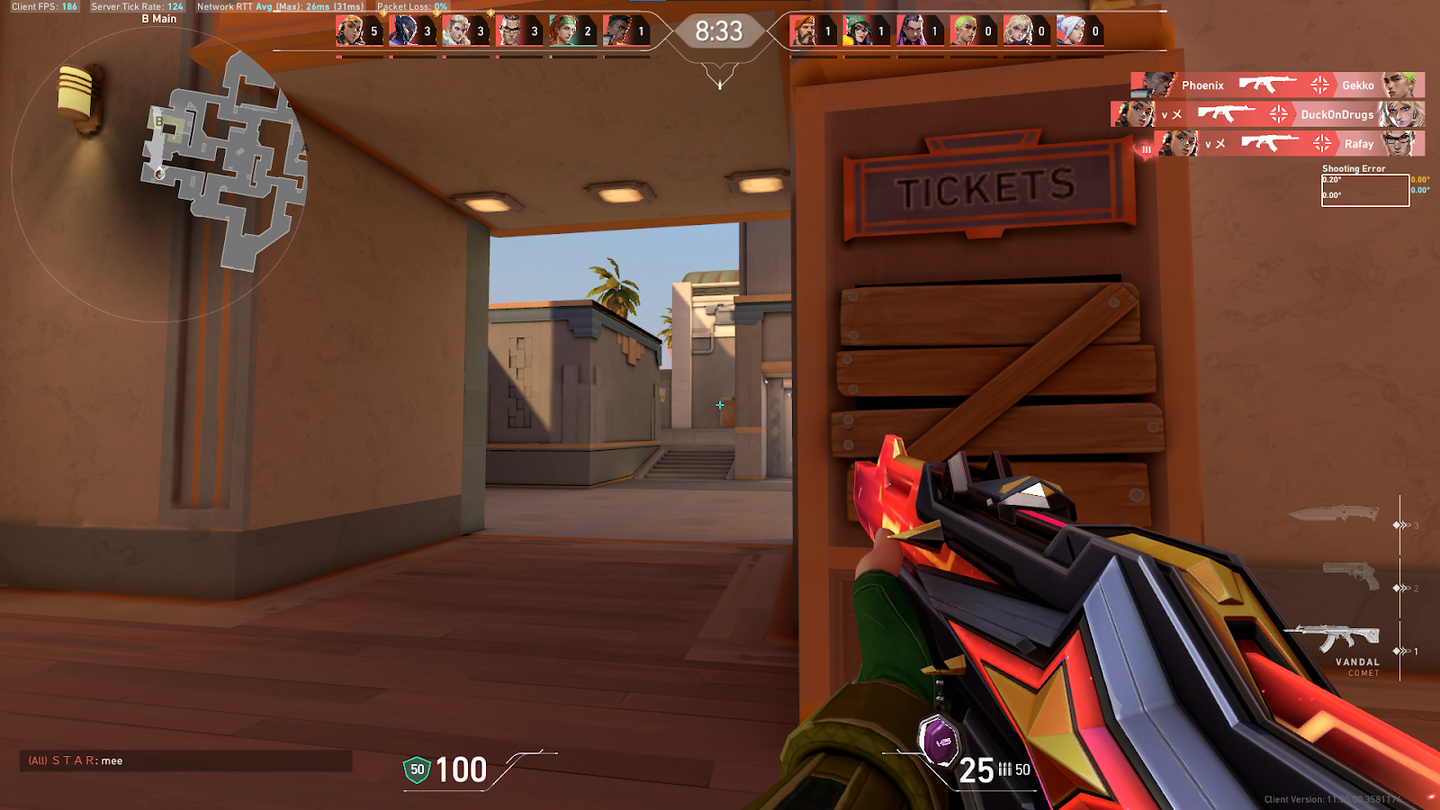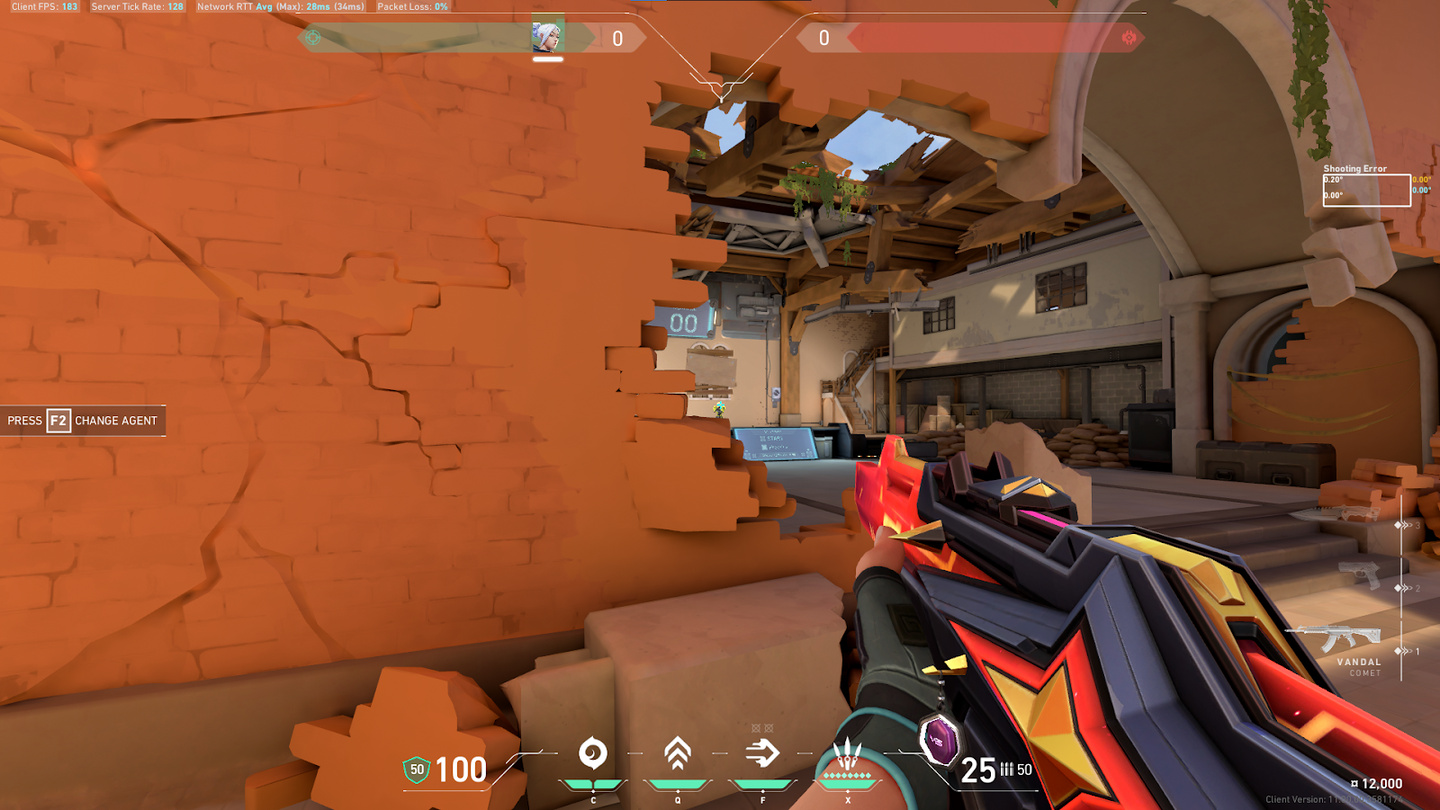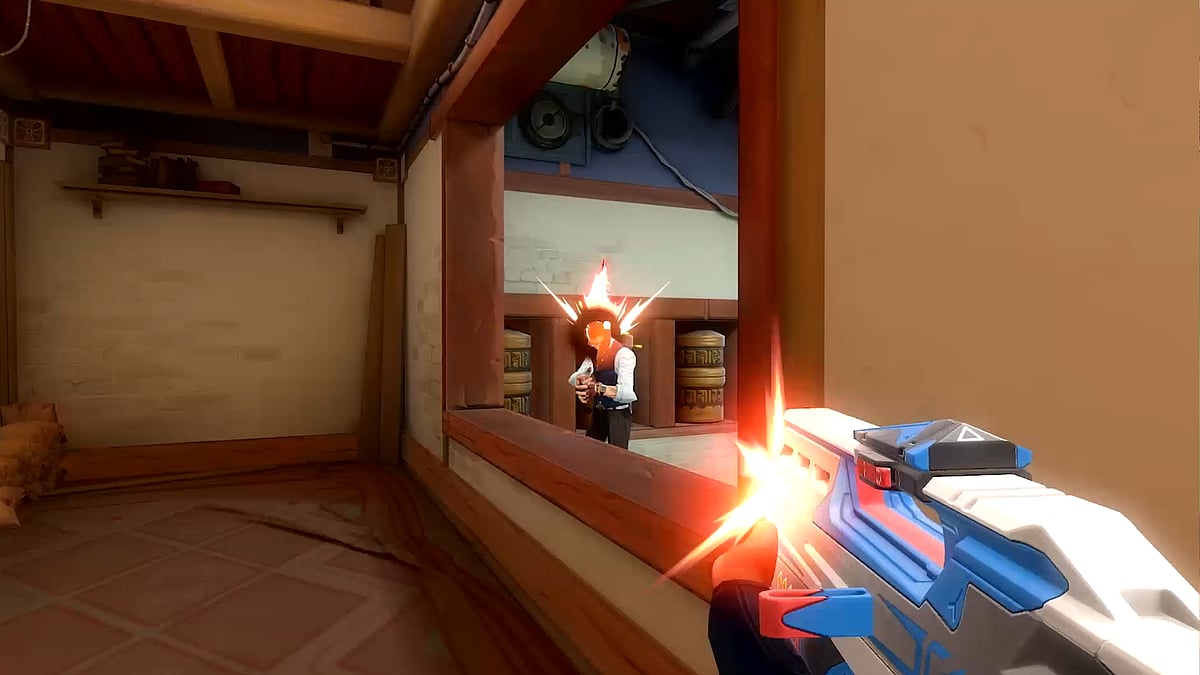Introduction
Peeking is a core mechanic in VALORANT, and it’s also where a lot of players struggle. Peeking isn’t just about swinging from a corner to try and headshot the enemy—it’s complicated, and a lot goes into a good peek. There’s tons of stuff to understand and internalize, but in this guide we’ll show you some common mistakes and give you a crash course in how to peek in VALORANT. After this, you’ll be able to make the right decision a lot more often, and you’ll be well on your way to improving as a player.
Quick tip: it’s peek, not peak. A peak is the pointed top of a mountain, or an adjective to describe the highest level, or maximum. This has nothing to do with the actual game, but we see a ton of mistakes online.
Types Of Peeks
There are many types of peeks. How you peek depends on your playstyle, the weapon you are using, and the agent you play. Not all peeks are intended to kill the enemy; some are used to farm information, bait enemies, or force utilities. However, most peeks are usually combinations or variations of these basic types:
- Normal Peek: Your standard peek, just swing from the angle to try to get the enemy.
- Jump Peek: You jump and strafe from behind the wall, exposing a small part of your body and then retreating again. Mainly used to bait Operator shots or gain info.
- Wide Peek / Wide Swing: As the name suggests, you strafe wide from the angle, to throw off the enemy’s crosshair placement.
- Jiggle Peek: Similar to jump peeking, but you don’t jump. You hug the wall and perform very small and quick strafes to gather information or bait shots. This tactic can be used to kill enemies if timed right.
- Crouch Peek: You peek while crouched. Usually not recommended, but it can be used as a one-time-trick to confuse the enemy.
Most of the time, good players combine different peeks to confuse the enemy. For instance, against an Operator player, you can jump peek to bait the shot and then quickly wide swing while he is reloading the next one to kill them.
Another example is the classic jiggle peek into wide swing. The jiggle peek makes the enemy move his crosshair closer to the angle, expecting another jiggle peek, which throws them when you wide swing.
The peek you use is situational; there is no perfect peek that works every time. There are a lot of factors to keep in mind. For instance, do you know where the enemy is? If not, consider using jump peek or jiggle peek to get the info. If you see the enemy is holding, you can wide swing with some utility to take care of him.
If the enemy is playing a common angle, you can peek and pre-fire. It’s also important that you isolate the angle where you expect the enemy to be, so you need to be aware of how you’re peeking as well. That last bit has more to do with game awareness and map knowledge than peeking, but in short, there are a lot of things to be aware of. Your movement, game sense, aim, and all other factors come into play.
Tips to Make Your Peeks Better
While we can’t give you a perfect peek to win every gun fight, we can tell you about some general mistakes to avoid.
Avoid Dry Peeking Whenever You Can
Dry peeking refers to peeking an angle without information and utility. It’s basically trusting your reflexes and aiming to help you if you end up spotting an enemy. While this works in the lower ranks, as players aren’t good mechanically, you will get punished quickly in the higher ranks.
If you expect an enemy to be close to where you are peeking, it’s always a good idea to use some utility; things like flashes, stuns, or recon abilities work great. For example. If you are peaking Market from Top Mid on Ascent, there is likely going to be a player holding that angle. If you dry peek, he will headshot you quickly. Instead, you can jump peek over the box to get info or ask your team to give you a smoke, stun, flash, or recon.
Don’t Be Predictable
This is an obvious tip, but it’s also one of the most common mistakes. It’s easy to go on autopilot during games and make predictable peeks. If you know the enemy is holding an angle and is ready for a peek, just peeking without a plan will get you killed.
It’s easy to one-tap a player while holding an angle if they go for a simple peek. All he has to do is microadjust his crosshair and one-tap your head.
So, don’t be predictable. If you know the enemy is holding an angle, try to throw their crosshair placement off. You can use a utility, bait their shot by jiggle peeking, or do a wide swing they won’t expect. Additionally, if you’ve been peeking the exact same angle at the exact same time (at the start of a round, for example) you’ll probably get punished after a while. Don’t allow your enemy to get comfortable.

Don’t Peek Alone
VALORANT is a team game, and if you are peeking at an enemy, communicate with your teammates. Ask them to trade you, give you utility, bait for you, or peek with you. Dry peeking angles by yourself without backup or some sort of support is one of the surest ways to lose a round for your team.
Learn to Pre-Aim
When you swing from an angle, you should only be using your left and right keys, and your crosshair should not be moving. You have to pre-aim the crosshair in such a way that when you swing the crosshair ends up on the enemy’s head or close to it, so you can micro-adjust. This will take some practice to get used to.
Try to imagine that there is no wall in front of you and you have to strafe to hit the enemy. Pre-aim your crosshair in a way that when you strafe out, the crosshair lands on the enemy’s head. You can train this in Deathmatch and Team Deathmatch.
There are some scenarios where it’s better to have your crosshair hug the angle instead of pre-aiming, but it’s a good idea to learn how to pre-aim common angles.
Understanding Peeker’s Advantage
Peeker’s advantage is basically a phenomenon in pretty much all competitive shooters. It’s as the name suggests: the peeker swinging from an angle has an advantage over the player holding it.
You might have faced this already. You are holding an angle, and the enemy peeks and kills you while they are moving. In reality, that’s not the case. On the peeker’s screen, they stopped and shot, but there is a delay in communication between the server and your client side, which makes it look like they shot you while moving.
Games try to minimize peeker’s advantage in various ways, but it’s still a thing in any competitive game.
As such, if you know where the enemy is, you should be swift in swinging and shooting them down. This not only gives you peeker’s advantage, but also leaves the initiative to you.
How To Practice Your Peeks
Much like everything else in VALORANT, you can improve your peeks with practice. There are a couple of ways you can practice your peeks. Of course, the situational awareness and game sense for choosing the right peek will only come with time and training. Watching streams and tournaments and seeing how pros clear certain angles can also help, though.
In any case: the easiest and the most enjoyable way of practicing your peeks is playing Deathmatch. Don’t focus on winning: just actively try to practice your peeks. Try varying your swing distances, practice wide swings, short peeks, jiggle peeks, etc. Learn to get the timing right: swing, stop, and headshot.
Another way is to enter the Range and try practicing on bots. You can set to the Range to 100 bots mode, get behind a wall, and try swinging and shooting the bots. You can include peek training in your daily warmup routine, and you’ll see big improvements pretty quickly.

Conclusion
While VALORANT has peeker’s advantage, peeking an enemy is always a stressful situation, especially if you know they are good. But if you know the basics of peeking and clearing angles, you’ll find that you win a lot more duels. This guide is just an introductory guide to peeking (there’s a lot of nuance to this seemingly simple act) but it should help you build a solid base for the future. Happy fragging!
Game News
Berita Olahraga
News
Berita Terkini
Berita Terbaru
Berita Teknologi
Seputar Teknologi
Drama Korea
Resep Masakan
Pendidikan
Berita Terbaru
Berita Terbaru
Download Film ether to play video games, whether on PCs, consoles, or arcade machines. These centers can offer a range of services, from casual gaming sessions to competitive tournaments.

